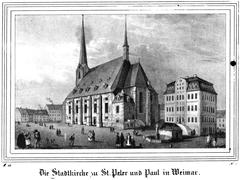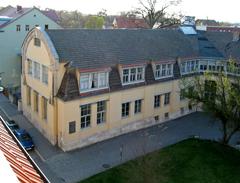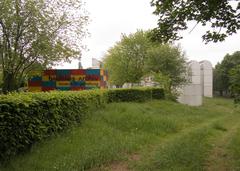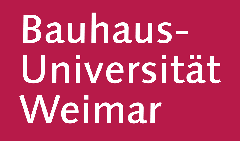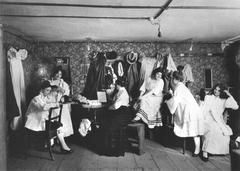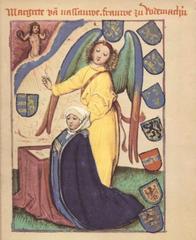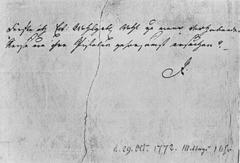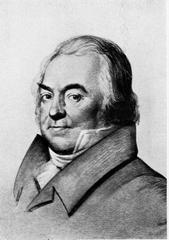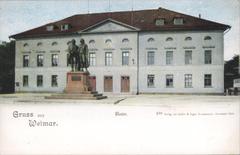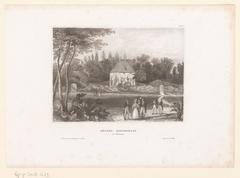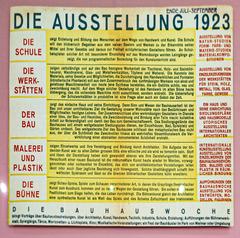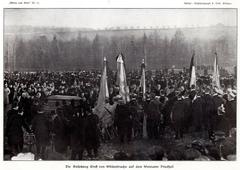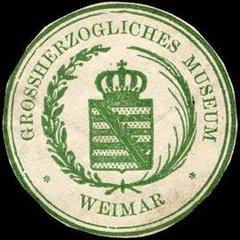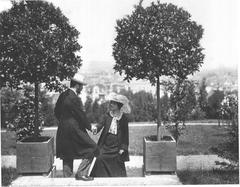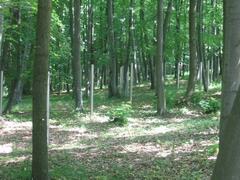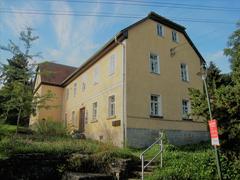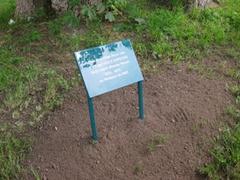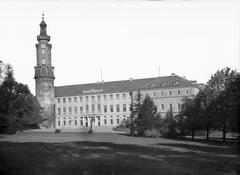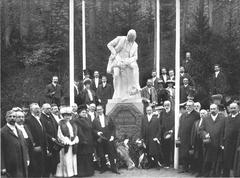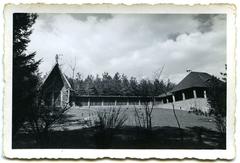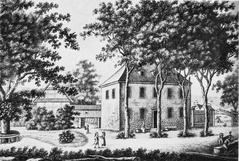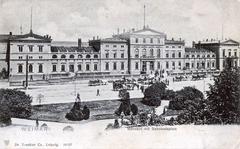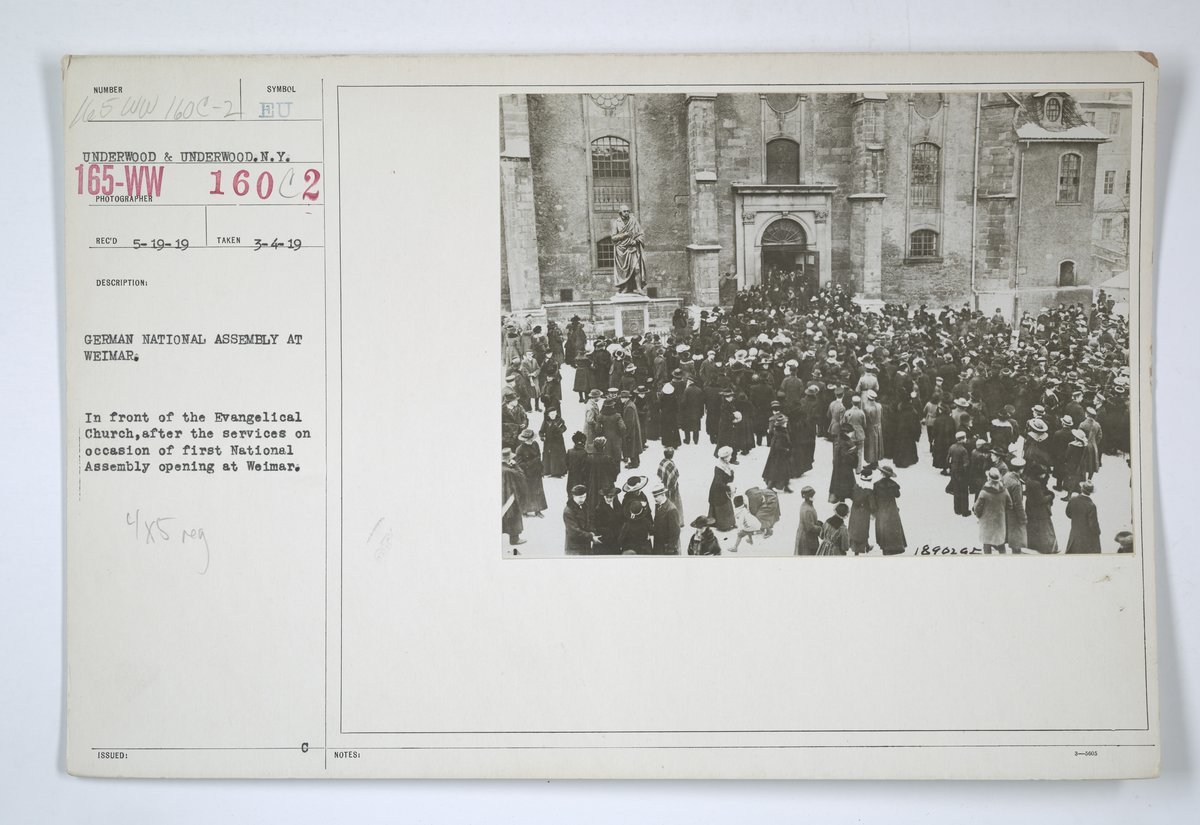
Visiting St. Peter und Paul Herderkirche Weimar: Hours, Tickets, and Historical Significance
Date: 14/06/2025
Introduction
St. Peter und Paul, also known as the Herderkirche, is a landmark at the heart of Weimar, Germany. Renowned for its architectural splendor, artistic treasures, and pivotal role in German history, the Herderkirche stands as a testament to Weimar’s enduring cultural and spiritual legacy. This guide provides a comprehensive overview of the church’s historical evolution, artistic highlights, visiting hours, ticket details, accessibility, tours, and travel tips—optimizing your experience at one of Weimar’s most cherished sites. For official updates and further information, visit the Weimar tourist information site and the UNESCO World Heritage listing.
Contents
- Historical Overview
- Architectural Evolution
- Artistic and Musical Heritage
- UNESCO World Heritage Significance
- Visiting Information
- Opening Hours
- Ticketing
- Tours and Accessibility
- Photography and Events
- Travel Tips and Nearby Attractions
- Frequently Asked Questions (FAQ)
- Summary and Visitor Recommendations
- Sources
Historical Overview
Origins and Early Development
The origins of the Herderkirche trace back to the mid-13th century. The earliest church on this site was constructed between 1245 and 1249, but following destructive fires in 1299 and 1424, the current late Gothic hall church was built from 1498 and completed around 1500. Throughout its existence, the Herderkirche has remained a focal point of Weimar’s religious and civic life, surviving war, fire, and social change (Wikipedia: Herderkirche).
Reformation and Enlightenment Connections
The church’s significance was heightened during the Reformation: Martin Luther preached here, and in 1525, the church transitioned from Catholic to Lutheran worship. In the late 18th century, Johann Gottfried Herder served as Superintendent and pastor, leaving a profound intellectual and spiritual legacy that earned the church its current name (Weimar Evangelisch: Herderkirche).
Architectural Evolution
Gothic Foundations and Baroque Enhancements
The Herderkirche exemplifies the late Gothic hall church, with its soaring nave, ribbed vaults, and abundant natural light. Its 75-meter tower is a defining feature on Weimar’s skyline (spottinghistory.com). Over the centuries, Baroque elements were added, especially in the choir and decorative details. The church has undergone several restorations, most notably after World War II bombings and again in the late 20th and early 21st centuries (fotoeins.com; weimar.de).
Exterior and Interior Features
The church’s exterior is distinguished by its twin spires and steep dark grey roof, while the interior is notable for its three-aisled hall, harmonious proportions, and light-filled space. The choir contains the burial vaults of the Saxon-Weimar ducal family.
Artistic and Musical Heritage
Cranach Altar and Artistic Treasures
The church’s centerpiece is the Cranach-Altar, a winged triptych painted by Lucas Cranach the Elder and completed by Lucas Cranach the Younger (1552–1555). This masterpiece is a prime example of Reformation-era art, depicting scenes central to Lutheran theology (bbc.com). Other treasures include the Luther Triptych, grave slabs of the ducal family, and Herder’s own grave.
Musical Tradition
Johann Sebastian Bach played the organ here during his tenure in Weimar, and several of his children were baptized at the Herderkirche. The church remains a venue for classical concerts, especially during Bachfest Weimar (Hayllar Music Tours).
UNESCO World Heritage Significance
Since 1998, St. Peter und Paul has been part of the “Classical Weimar” UNESCO World Heritage ensemble, recognized for its cultural and intellectual impact during the Enlightenment and early Romantic periods. The church’s association with Herder, Goethe, Schiller, and Bach, as well as its role in the Reformation, underpin its universal value (UNESCO World Heritage List).
The Herderkirche is managed by the Klassik Stiftung Weimar, Germany’s largest cultural foundation, ensuring the preservation and accessibility of this and other cultural sites in Weimar.
Visiting Information
Opening Hours
- April to October: Monday–Saturday, 10:00 AM – 5:00 PM; Sunday, 12:00 PM – 4:00 PM
- November to March: May be reduced; always check the official tourism website before your visit.
Ticketing
- Admission: Free entry; donations are appreciated to support ongoing preservation.
- Tours and Events: Guided tours and special events may require tickets, available at the church, the tourist office, or online (perto.com).
Tours and Accessibility
- Guided Tours: Offered in German (regularly) and English (by prior arrangement). Specialized altar, tower, and bell tours are available on set days and times—see the tour schedule.
- Accessibility: The main nave is wheelchair accessible via ramps. Tower and bell tours involve steep stairs and are not suitable for those with mobility challenges.
- Facilities: Restrooms are nearby; cafés and shops are within walking distance of Herderplatz.
Photography and Events
- Photography: Allowed without flash; professional or commercial photography requires prior permission.
- Events: The church hosts concerts, lectures, and special services throughout the year. Schedules are posted on the event calendar.
Travel Tips and Nearby Attractions
- Location: Herderplatz 8, 99423 Weimar—centrally situated in the old town, near the Herderhaus, Goethe House, Schiller’s House, the Duchess Anna Amalia Library, and more.
- Getting There: 15-minute walk from the main train station; accessible by local bus.
- Weimar Card: Consider the Weimar Card for discounted or free entry to other local museums and sites (annees-de-pelerinage.com).
Frequently Asked Questions (FAQ)
Q: What are the Herderkirche visiting hours?
A: Typically Monday to Saturday, 10:00 AM – 5:00 PM; Sunday, 12:00 PM – 4:00 PM. Hours may vary on holidays.
Q: Is there an admission fee?
A: Entry is free, but donations are welcome. Guided tours or concerts may require a ticket.
Q: Are tours in English available?
A: Yes, but advance arrangement is recommended through the tourist office.
Q: Is the church wheelchair accessible?
A: Yes, the main entrance and nave are accessible; the tower and crypt are not.
Q: Can I attend a service or concert?
A: Yes, public services and concerts are regularly scheduled—check the event calendar.
Q: Is photography allowed inside the church?
A: Yes, without flash and with sensitivity during services.
Summary and Visitor Recommendations
St. Peter und Paul (Herderkirche) is a vital piece of Weimar’s spiritual and cultural landscape, notable for its late Gothic architecture, the celebrated Cranach-Altar, and its associations with figures like Luther, Herder, and Bach. As part of the UNESCO Classical Weimar ensemble, it offers visitors a unique opportunity to encounter centuries of history, art, and music.
Visitor Tips:
- Visit during off-peak hours for a quieter experience.
- Book guided tours in advance, especially for English-language or specialized themes.
- Combine your visit with other nearby UNESCO sites for a full day’s cultural immersion.
- Download the Audiala app for audio guides and event updates.
For updated schedules, ticketing, and visitor services, consult the Klassik Stiftung Weimar website and the Weimar tourist information site.
Sources
- Herderkirche – Wikipedia
- Stadtkirche St. Peter und Paul – Weimar.de
- Herderkirche – Weimar Tourist Information
- UNESCO World Heritage List: Classical Weimar
- Spottinghistory.com – St. Peter and Paul Church
- Fotoeins.com – Weimar UNESCO WHS
- BBC Travel – The city that Luther, Bach and Goethe all shared
- Hayllar Music Tours – In the Footsteps of Bach
- Annees-de-pelerinage.com – The 15 Best Things to Do in Weimar
- Discover Walks – Top 10 Interesting Facts About Classical Weimar
- Klassik Stiftung Weimar
- Perto.com – Stadtkirche St. Peter und Paul Events

